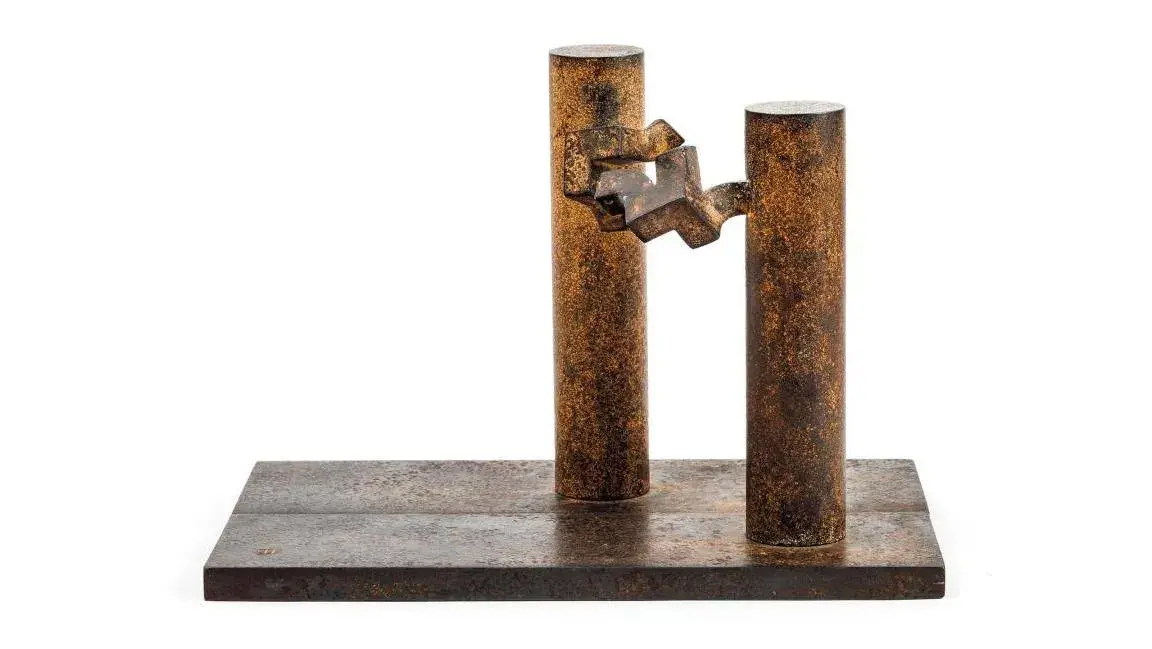A Project by Eduardo Chillida for a Monumental Sculpture in Dallas
Published on

This study by the Spanish artist for an installation in Dallas, Texas, plays on the tensions between heavy mass and empty space, between rigid geometric forms and dynamic elements. Eduardo Chillida (1924-2002), De Música, proyecto para Dallas VIII and De Música, proyecto para Dallas IX, Corten steel, 1989, unique work, h. 14 and 13 cm/5.4 and 5.1 in, base 21.5 x 13 cm/8.46 x 5.1 in.Estimate: €600,000/800,000© Zabalaga-Leku, ADAGP, Paris 2025 A spatial dialogue is created by two vertical cylinders fixed to a rectangular steel base with a rough, oxidized texture: these two simple forms face each other, seemingly close to touching, connected by an









